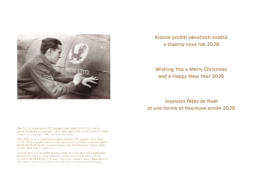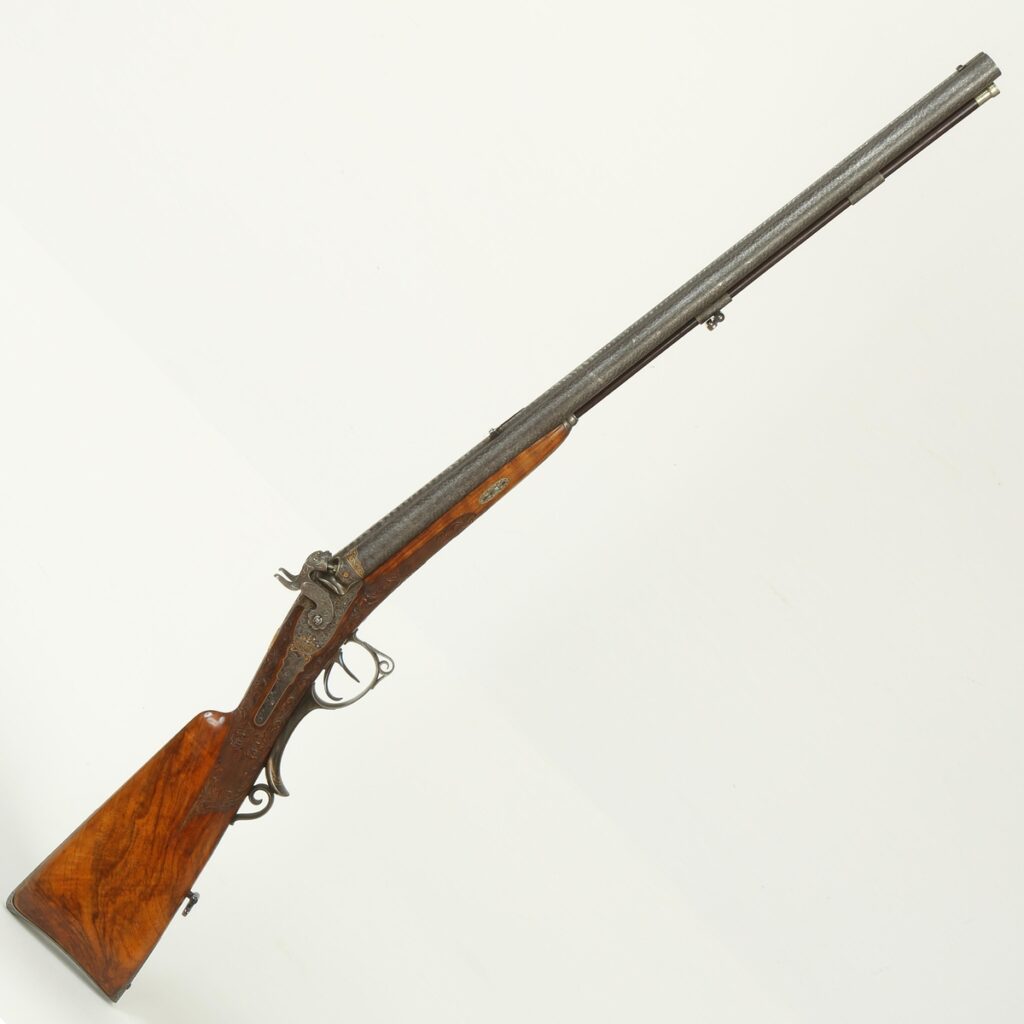
05 Double-Barreled Percussion Rifle, J. Mašek, Jablonné v Podještědí, 1854. Hunting rifle of Archduke Karl Ludwig of Austria (1833−1896), father of Archduke F. F. d'Este.
Fotogalerie
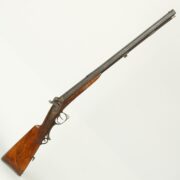
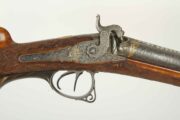


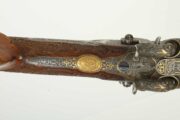

The double-barrelled rifle with percussion locks came from the workshop of the excellent Czech gunsmith Josef Mašek Jr. and was made in 1854 probably for Archduke Karl Ludwig of Austria (1833–1896), brother of Emperor Franz Joseph I and father of the heir to the Habsburg throne Franz Ferdinand d’Este, who was assassinated in Sarajevo in June 1914.
The cylindrical barrels made of damascus steel are fitted with a rifled bore and a gilded inscription that reads “J. MASCHEK IN GABEL” on the central plate. The rear of the barrel is decorated with engraved and partially gilded floral and linear ornaments. At the bottom screw, the decoration also continues with figural motifs, and the gilded Habsburg Archduke’s coat of arms can be found on the thumb plate. The lock plates are decorated on the entire surface with engraved floral ornaments and a larger hunting scene. The right plate has a gilt inscription that reads “MASCHEK” in the cartouche, the left one reads “IN GABEL”. The rifle is half-stock and the stock is made of quality walnut rootwood, richly decorated with carved leaf ornaments and herringbone. The iron fittings are decorated with engraved and partially gilded floral and figural motifs. On the butt-plate, the year “1854” is embedded among the engraved ornaments. The back of the trigger guard is made of horn.
The manufacturer of the weapon, master gunsmith Josef Mašek (Maschek) Jr. (1826–1891), worked in the small North Bohemian town of Jablonné v Podještědí (Gabel in German), in the workshop founded by his father Josef Maschek Sr. (1797–1852). The collections of the Military History Institute include another, no less luxurious hunting rifle made by the same gunsmith, a double with percussion locks, which was made around 1855 for Leopold II, Grand Duke of Tuscany (1797–1870). The exceptional standard of both weapons shows that although gunsmithing was generally concentrated mainly in large cities and well-known armouring centres, many gunsmiths from small rural towns also produced excellent weapons for prominent clientele.
Length 1,030 mm, barrel length 652 mm, calibre 18 mm, weight 3,074 g.
Aktuálně
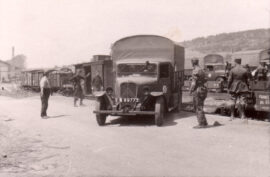
Oceňovaní spojenci - Pozemní útvary československé branné moci v bitvě o Francii očima francouzského velení

Vánoce a přelom roku v zahraniční misi na Slovensku v roce 2022

Prosinec 1944 – oficiální vydání prvních poštovních známek osvobozeného Československa


